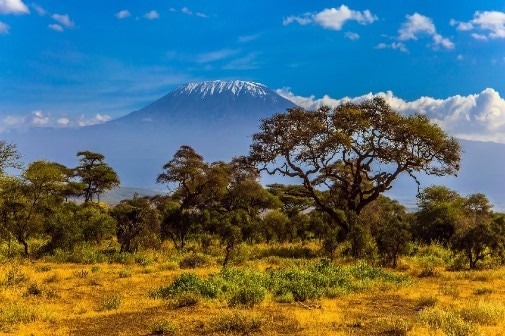According to a University of York scientist, immediate action is desperately required to protect the world’s useful mountain ecosystems. The researcher’s policy brief is being presented at the December 2022 United Nations Biodiversity Conference (“COP15”) in Montreal, Canada.

Image Credit: University of York.
Professor Robert Marchant, from the University’s Department of Environment and Geography, is setting the stage for national governments to put mountain ranges at the center of their climate change and biodiversity policy measures and actions.
The UN General Assembly called 2022 the International Year of Sustainable Mountain Development—around two decades after the first International Year of Mountains.
However, while few successes have been achieved during that time, Professor Marchant states that the national policy simply is not competing with population growth, land use change, development, and the effects of climate change on global mountain systems.
Land Degradation
Twenty years on, climates are still changing, populations are still growing, and mountain environments continue to be developed and transformed—but what hasn’t happened is any corresponding establishment of sustainable policies.
Robert Marchant, Professor, Department of Environment and Geography, University of York
Marchant added, “Government environmental and business policies are rarely joined up and we are seeing continued widespread land degradation in mountain habitats. This includes uncontrolled grazing, deforestation, or overdevelopment - and much of it is resulting from weak policies and changing tenure laws.”
Nearly, a quarter of the Earth’s land mass tends to be covered by mountains. They host around half the biodiversity hotspots of the world. They are a tremendously significant component of the global water supply since they receive heavy rain compared to lowland areas. Also, it experiences less evaporation at high elevations and consists of huge stores of water, such as ice and snow.
Resilient
Mountain ecosystems that are functioning well seem to be more durable to climate extremes. Also, they have the potential to buffer shocks like high-intensity rainstorms or extended dry spells. Also, they are significant stores of carbon and important promoters of biodiversity.
In spite of this, mountains do not receive the equivalent policy attention and investment from their national governments. They are especially susceptible to climate change and human interventions, which tend to endanger their significant ecosystems worldwide.
For instance, the area near Mount Kilimanjaro in Kenya is known to be an area of quick economic development and high population density. It has witnessed a significant expansion in agriculture over the last two decades, as land has been privatized and companies have identified that they can drill deep boreholes in the land to withdraw water from the aquifer of the mountain.
Water Resources
Once you’ve paid for that borehole, that water is a free resource to you. But these services are provided by nature—and no-one is presently paying for either the water resources or for stewardship of that land. Asking companies to pay for this kind of service, by issuing controllable permits for example, would be a step towards treating our mountain resources with more respect.
Robert Marchant, Professor, Department of Environment and Geography, University of York
Professor Marchant, along with his co-authors, is calling on countries to make bigger investments in mountain ecosystem restoration activities. Also, he is pushing to formulate efficient climate change policies that examine the special nature and resources of mountain ranges.
Furthermore, what is required immediately is more international information shares and data collection on mountain use.
We are hoping for some progress at COP15, but what is really needed is an international treaty or code of practice that accepts the value of our mountain ecosystems, and I suspect that is some way off.
Robert Marchant, Professor, Department of Environment and Geography, University of York